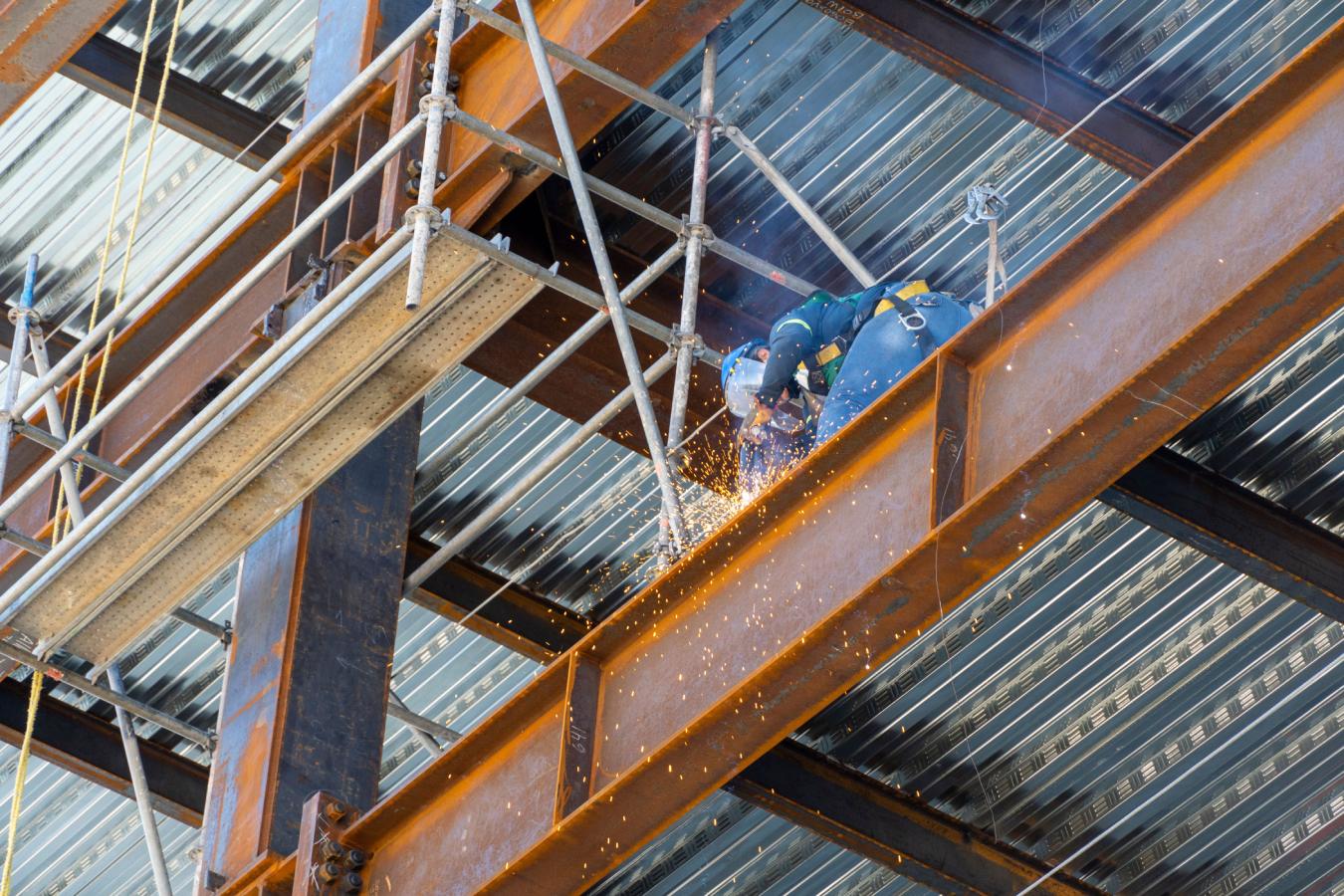Steel is the core of construction operations since it has a unique amount of strength, flexibility, and durability. Steel is the spine of structural components that enable foil to carry heavy loads and resist external forces. The steel quality determines the stability and longevity of any building. High quality steel minimizes risks of failure, deformation, cracking or collapse especially during such instances as earthquakes or high winds. It also minimizes maintenance and repairs allowing the overall safety and reliability of a structure. Accordingly deploying the correct steel is vital to ensuring safety and performance assurances in any construction project.
|
Table of Content
|
What are The Different Structural Elements in Construction?
Slabs:
Slabs constitute the horizontal surfaces of floors and roofs and play a pivotal role in the distribution of loads throughout a building. Typically constmtcted of reinforced concrete, they integrate the compressive strength of concrete and tensile strength of steel. Grid patterns of steel reinforcement bars are placed and buried in the concrete to distribute loads evenly and bear tension forces. Such integration increases the slab's strength and structural performance. Slabs are of various categories, one-way, two-way, flat slabs, etc., and using the correct category and reinforcement is critical. Effective tmt calculation for slab guarantees stability and cost-effectiveness in residential and commercial projects.
Footings:
Footings are the foundation of a building by distributing structural loads to the ground. Placed under columns and bearing walls, they prevent settlement and provide balance to the structure. Usually constructed of concrete, footings are also reinforced with steel bars for increased load-carrying capacity and cracking resistance. In many cases, these bars are placed in grid or cage patterns to distribute loads evenly to the ground. Soundproof steel calculation for footing ensures safe and long-lasting structures. Not only do reinforced footings increase lifespan, they also help safeguard buildings from collapse by preventing unequal stress distribution.
Columns:
Columns are vertical structural elements that transmit loads from the roof, beams, and higher floors down to the ground. They have to resist large compressive stresses, and their failure would compromise the whole structure. Constructed using materials such as concrete or steel, columns come in different shapes, circular, square, or rectangular. Reinforcement with steel bars is required to enhance strength and also to avoid buckling. An accurate column steel calculation means determining the number and location of the vertical bars and the ties. It ensures that the column can resist axial loads effectively, making it a factor in the overall stability and safety of the building.
As we can observe, the stability and integrity provided by slabs, footings, and columns make them essential for structural durability, and steel is the element that holds them all together. Let us proceed to learn about how to determine steel quantity for such important structural members.
As we can see integrity and stability offered by these elements are essential for a building to withstand, steel is crucial for construction. Let’s see the step-by-step calculation of steel for these three structural elements.
Also Read: What Are the Different Grades of TMT Bars?
Factors Affecting Steel Quantity Calculation
There are several factors that dictate how to determine steel quantity for various structural members. The structure's shape and size have a major influence on the quantity of steel required. Structural load necessities, dead loads, live loads, and weather conditions, also establish requirements for reinforcement. The structure type (residential, commercial, or industrial) and construction techniques affect the tmt calculation of slab or column design. Also important are the location, bar spacing, and diameter of steel bars as defined in structural plans. Site conditions, design codes, and safety margins also influence steel calculation for footing and other members. Proper planning guarantees minimum material utilization and structural safety.
How to Calculate Steel Quantity for Structural Elements?
Slab Steel Calculation
For the initial process of tmt calculation for slab, measure the length and width of the slab to find the area of the slab. Determine the reinforcement type (main and distribution bars) and their spacing. Then determine the quantity and length of bars needed for each direction. Divide the total length by unit weight of steel (depending on bar diameter) to obtain the overall weight. Follow similar steps for both distribution and main bars. This process is a good estimate of the steel quantity required. By using this systematic approach, one can maintain safety as well as cost-effectiveness in slab construction.
- Determine slab dimensions
- Calculate the area of the slab
- Identify the type and spacing of reinforcement
- Calculate the number of main reinforcement bars
- Calculate the length of each bar
- Calculate the total length of the main bars
- Calculate the weight of the main bars
- Repeat steps 4 to 7 for distribution bars
Footing Steel Calculation
Begin with the measurement of footing dimensions to calculate its area and depth. Determine the reinforcement pattern, typically two levels of bars perpendicular to each other. Determine the number of bars per direction and their lengths. Multiply the length by unit weight per bar diameter to get the total weight. Accurate steel calculation of footing will ensure the transmission of load to soil in an efficient manner. This also avoids cracking and settlement, particularly under fluctuating loads. Proper calculation reduces wastage and allows ample reinforcement for safe and long-lasting footings.
- Determine the footing dimensions
- Identify reinforcement details
- Calculate the number of bars in each direction
- Calculate the length of each bar
- Calculate the total length and weight of the bars
Column Steel Calculations
Start the column steel calculation by determining the size and height of the column. Make note of the reinforcement details, such as the number and size of vertical bars and ties. Calculate the number of vertical bars needed and their lengths. Compute the amount of total length and weight for both lateral ties and vertical bars. Accurate steel calculation for column guarantees structural stability, avoids buckling, and increases the distribution of loads. This step-by-step procedure is usually followed by builders to guarantee safety. Knowing how to calculate column steel quantity optimizes the use of steel while guaranteeing that the column is able to resist axial and lateral stresses.
Include the steel weights calculated for slab, footing, and column to determine the total steel quantity required for your project. Accurate estimation of steel quantity is not only essential for achieving structural safety but also for controlling cost efficiently.
By following these step-by-step procedures and applying correct structural drawings, the correct quantity of steel for each element is decided on by builders and engineers. Material wastage is avoided, and the overall structure's longevity as well as safety increases.
- Determine the column dimensions
- Identify reinforcement details
- Calculate the number of vertical bars
- Calculate the length of each vertical bar
- Calculate the total length and weight of vertical bars
- Calculate the number and length of lateral ties
- Calculate the total length and weight of lateral ties
Add up the weights of all the reinforcement bars calculated for slabs, footings, and columns to get the total steel quantity required for the construction project.
Accurate calculation of steel quality is also essential for cost-effectiveness of construction projects as well. By following these step-by-step guidelines and using detailed structural drawings, engineers and builders can determine the precise amount of steel needed for slabs, footings, and columns, thereby optimizing material usage and ensuring the safety and durability of the structure.
Also Read: TMT Bars Length and Weight Chart Complete Overview
For more information, please reach out to us at: Sales@sreemetaliks.com

